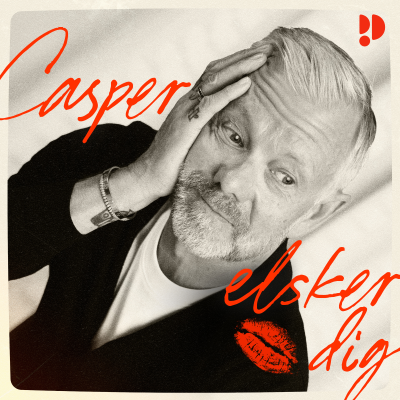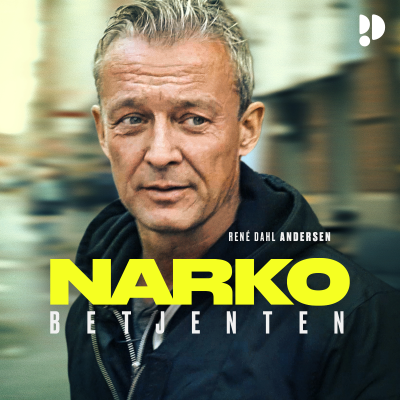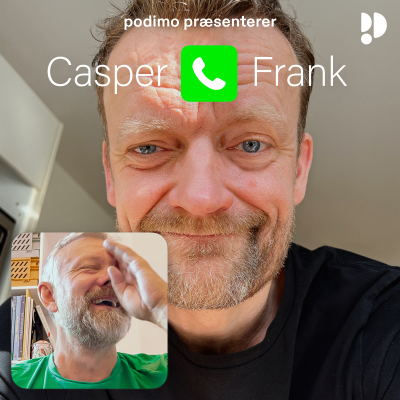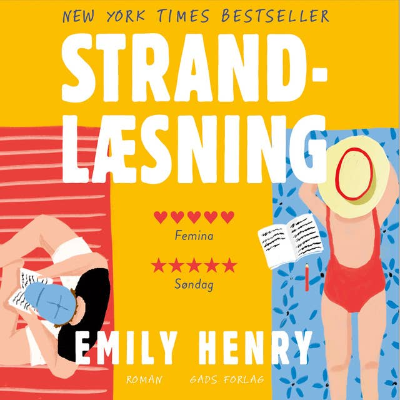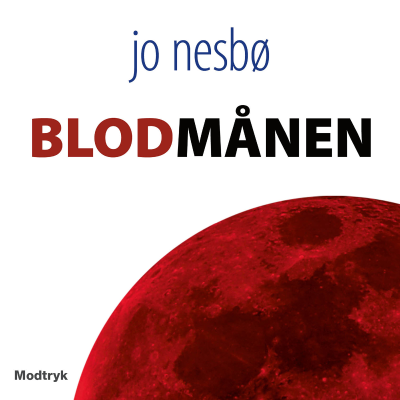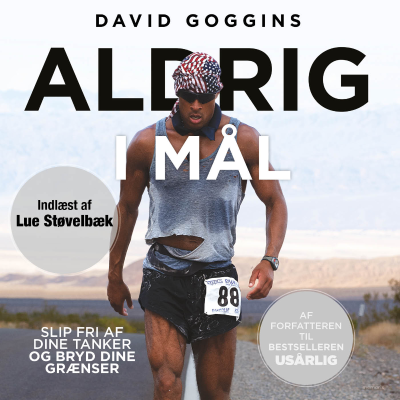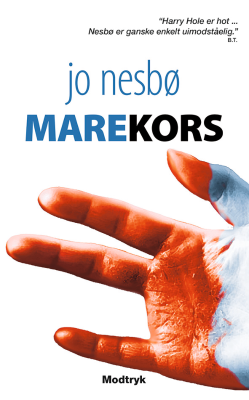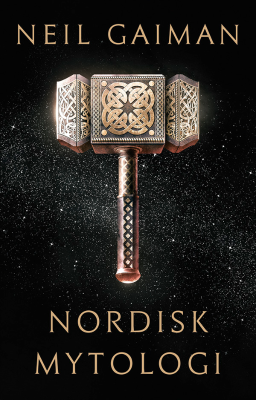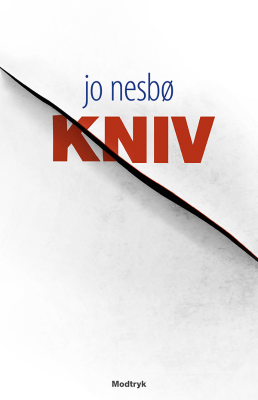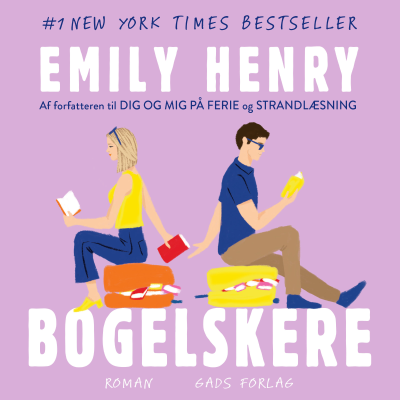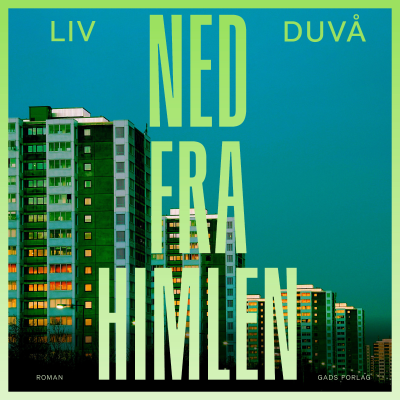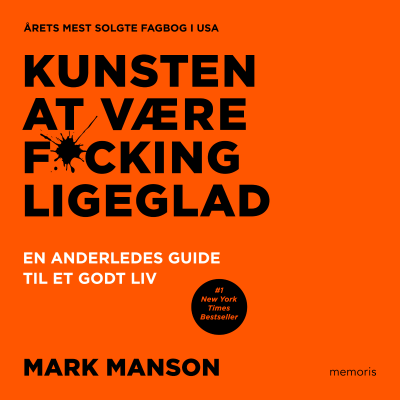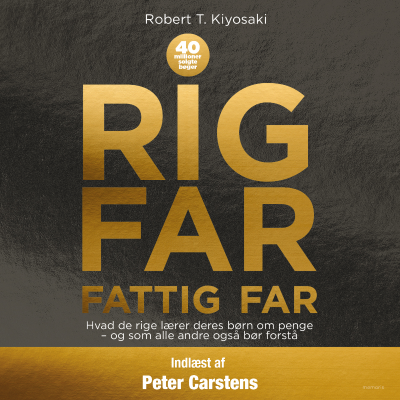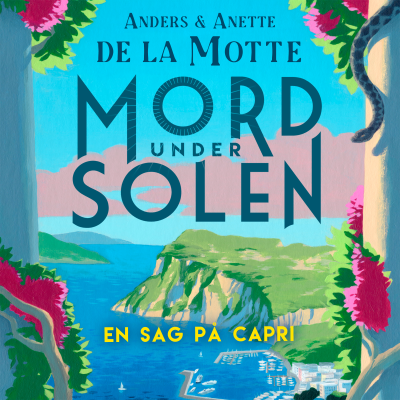
The Nexus
Podcast af Harvard University Graduate School of Design
Begrænset tilbud
3 måneder kun 9,00 kr.
Derefter 99,00 kr. / månedIngen binding.

Mere end 1 million lyttere
Du vil elske Podimo, og du er ikke alene
Rated 4.7 in the App Store
Læs mere The Nexus
The Nexus explores the intersection of design, identity, and practice through conversations with Black designers, writers and educators. Brought to you by the African American Design Nexus, an initiative at Harvard University’s Graduate School of Design that seeks to showcase the work of Black designers, explore different geographies of design practice, and inspire design institutions to adopt new approaches toward elevating Black designers.
Alle episoder
10 episoderOVERVIEW 508 W Beach St is Brandon Bibby’s (Bibby) earliest memory of a building. The complexity of navigating one’s spatial position in Arkansas was the earliest recognition of the mediation of race and class in the built environment. At Beach St, the 900 square foot home provided the basis for a career in preservation, or “a gift and appreciation of our ancestors’ sacrifices in the intention designed with love for our collective history, heritage, memory, and culture.” “Bibby,” the affirmative name acknowledging his family’s past as his purpose for architecture, receives architecture as an interpersonal affair of preserving and stewarding spaces of the Black diaspora. In his own practice, the people and culture are first, and design “happens.” For Black architects, he recognizes a displacement of the “ego-driven” archetype and an acceptance of making space that would not exist if no one else had. The beneficence of these Black architects does not solely impact Black communities but, in turn, has created typologies of design that reflect the spaces of radical inclusion. Bibby’s work with the African American Cultural Heritage Action Fund (AACHAF) reflects his belief that architecture has a social good and can make a change for the social betterment of all. The AACHAF is narrating the stories embedded across the country of Black designers and communities forging design excellence through a sovereign craftsmanship informed by their local condition. Historically, the exclusion of Black communities from accessing the materials to design and produce space has meant an erasure of our contributions to formalist architecture or the reorientation of our work as “vernacular.” What preservation provides is the ability to assert the nameless designers that exist in the archive of Black history. And to assert these designers with their unique capacities and expert capabilities in making lasting architectural heritage in the interstitial social, political, and economic conditions. Even in the loss of urban renewal and contemporary gentrification, the disconnection of African-American communities to one another has intentionally severed us from a deep connection to place. Preservation means unearthing these connections and holding these memories with us towards change. This episode Black Preservation, or how we know what to fight for? is dedicated to intersecting recent historic preservation work for Black architectural works and history, with a sustained realization of the role of advocacy/protest in the design process of Black spaces throughout history. We are seeking to forge a new definition for preservation and design within a Black context and aesthetic to be able to attend to all of the past + that which can be built for the future. Full Transcript ABOUT BIBBY [https://aadn.gsd.harvard.edu/wp-content/uploads/2025/04/DSC9121-1-scaled.jpg] Brandon Bibby is a senior preservation architect with the National Trust’s African American Cultural Heritage Action Fund, helping them manage the Conserving Black Modernism program. Bibby, ASID, AIA, NCARB, NOMA, WELL AP, is an artist, activist and architect raised in the plains of Arkansas, where the Delta meets the Ozarks. He is a multidisciplinary researcher and designer invested in questioning narrative, representation and access in the built environment and its impacts on memory and behavior for marginalized communities. He is a next-generation preservationist motivated by movement, memory and culture in contemporary Black space. HOW TO LISTEN You can listen to all available episodes and find program notes here on our website, or subscribe to the series via one of these providers: iTunes [https://podcasts.apple.com/us/podcast/the-nexus/id1523060731], Spotify [https://open.spotify.com/show/2hUEiwAQ95bDEELYfTtWmV], iHeartRadio. [https://www.iheart.com/podcast/269-the-nexus-68313501/] ABOUT THE SHOW Developed by the African American Design Nexus at Harvard University’s Graduate School of Design, The Nexus is a podcast that explores the intersection of design, identity, and practice through conversations with Black designers, writers, and educators. The Nexus is produced in conjunction with a commitment by the Frances Loeb Library [https://staging.gsd.harvard.edu/frances-loeb-library/general-collections/] to acquire and create an open-access bibliography [https://guides.library.harvard.edu/raceanddesign] of various media suggested by the GSD community on the intersection between race and design. SHOW CREDITS The Nexus Season 4 is hosted by Tyler White, a dual candidate in the Masters of Urban Planning and Master of Design Studies, Narratives program at the Harvard Graduate School of Design. The show is recorded and edited by Maggie Janik [https://www.gsd.harvard.edu/person/maggie-janik/], and the theme music is produced by DJ Eway [https://www.instagram.com/djeway/]. CONTACT For all inquiries, please email aadn@gsd.harvard.edu [aadn@gsd.harvard.edu]. The post Bibby [https://aadn.gsd.harvard.edu/2025/04/25/bibby/] first appeared on The Design Nexus [https://aadn.gsd.harvard.edu].
OVERVIEW The core of environmental practice is a resonance with the land at the register of the self and with concern for sustaining the productivity of the land for generations to come. Across the Black Belt South and Appalachia, Black women have been stewarding the cultural practice of memory and kinship to their daughters and children to come. The generations of learning have fortified Black approaches to land management and practice that require a deep reciprocity with giving to the land what is taken. Mavis Gragg’s great-great-grandmother, self-entitled “America,” laid claim to a nascent entrepreneurial spirit, owning land in her native western North Carolina. Reflections of childhood embody an inherency with nature, not by name but through experience, walking to school in the forest and spending time with family. Nature enshrouds these communities in a solace that emerged to provide rest and healing. Both of these “country girls” take heed from the caretaking methods of their foremothers to take care of all things with respect and love for their agency. Memory becomes a story of how to do things and how to keep things. At the center of Mavis’s practice is the affirmation of the act of humanity and resistance that is Black ownership. To combat the challenges around heirs’ property, Gragg has co-located resources for Black communities to govern their land through legal consultation, digitizing official documentation, and imagining new methods of buying and purchasing intra-Black communities. Euneika’s work brings light and joy to the heaviest of topics around race, justice, and our country’s deep history. As a designer and creative artist, her work defines the “social architectural practice” of how Black women hold and make space. This practice of translation combines community organizing and political education to produce a public history trail that makes visible the endless contributions of generations of Black women to shaping the productivity and cultural importance of the South. The agricultural sovereignty that Black communities transported to the Americas, through their forced enslavement, was an intelligence and manipulation of the landscape for the abundant capital surplus that has made the modern economic system. The landscape intelligentsia of Black labor and land practice manifests beyond high outputs of raw material, but also in the cultural stewardship of making meaning of a violent place through ethics of care, rest, leisure, and entertainment. Without the committed work of Black women through time, the longevity of Black life and Black culture would have been reduced to its intended decline and eradication. Through the preservation of Black land ownership and the maintenance of Black land sovereignty, Afro-ecofeminism becomes history’s ledger of the conservation of land and Black futurity. When we align our history to the care practices of respect, reflection, and reciprocity with the landscapes that sustain us, and even those that are constructed to oppress us, we become embodied knowledges of how to live beyond land as an object This episode, Afro-Ecofeminism and Preserving Black Ecologies, is dedicated to exploring the intersection of design, land preservation, and land reclamation within a notion of the critical role of Black women and Black femmes in shepherding the cultural and ecological knowledge that sustains the generationality of Blackness. How can understanding the land as a domain of history and future reshape the way we design and preserve the potential of Black life? More importantly, in this moment where there is the Great Return, how does reorienting Black focus and investment to the South maintain, repair, and project a new trajectory? Where are designers in this fight? Full Transcript ABOUT EUNEIKA AND MAVIS [https://aadn.gsd.harvard.edu/wp-content/uploads/2025/04/Euneika-photographed-by-K-Sipp.jpg] Euneika Rogers-Sipp (artist name: Ndgo Bunting) is a planning and design artist, a social entrepreneur, as well as the Founder of the Destination Design School of Agricultural Estates in Atlanta, Georgia. Most recently, she launched an ongoing exploration, “Digging DuBois,” a regional reparations ecology project on spatial solutions to decades of racial health inequities impacting descendants of enslaved Africans in the Southern United States Black Belt Region. Previously, Euneika was Executive Director of Regenerative Design at the Sustainable Rural Regenerative Enterprises for Families (SURREF), where she coordinated the Black Belt Community Based Tourism Wealth Creation Program and delivered design interventions such as the Family Water Access Project, Black Belt Agricultural Homestays Project, and a Community Regeneration Education curriculum. [https://aadn.gsd.harvard.edu/wp-content/uploads/2025/04/mavis.png] Mavis Gragg is a self-described “death and dirt” attorney and conservation professional with nearly twenty years of experience. Mavis’ mission is to empower generational, family real estate owners, especially heirs’ property owners, with knowledge and tools and to raise the visibility of numerous ways in which heirs’ property is important to affordable housing, rural and urban planning, climate resiliency, and markets. She is the co-founder and CEO of HeirShares, which is building groundbreaking technology to facilitate affordable solutions for family real estate ownership. A 2024 Loeb Fellow at the Harvard Graduate School of Design, Mavis previously led the eight-state Sustainable Forestry and African American Land Retention Program and The Gragg Law Firm, PLLC. HOW TO LISTEN You can listen to all available episodes and find program notes here on our website, or subscribe to the series via one of these providers: iTunes [https://podcasts.apple.com/us/podcast/the-nexus/id1523060731], Spotify [https://open.spotify.com/show/2hUEiwAQ95bDEELYfTtWmV], iHeartRadio. [https://www.iheart.com/podcast/269-the-nexus-68313501/] ABOUT THE SHOW Developed by the African American Design Nexus at Harvard University’s Graduate School of Design, The Nexus is a podcast that explores the intersection of design, identity, and practice through conversations with Black designers, writers, and educators. The Nexus is produced in conjunction with a commitment by the Frances Loeb Library [https://staging.gsd.harvard.edu/frances-loeb-library/general-collections/] to acquire and create an open-access bibliography [https://guides.library.harvard.edu/raceanddesign] of various media suggested by the GSD community on the intersection between race and design. SHOW CREDITS The Nexus Season 4 is hosted by Tyler White, a dual candidate in the Masters of Urban Planning and Master of Design Studies, Narratives program at the Harvard Graduate School of Design. The show is recorded and edited by Maggie Janik [https://www.gsd.harvard.edu/person/maggie-janik/], and the theme music is produced by DJ Eway [https://www.instagram.com/djeway/]. CONTACT For all inquiries, please email aadn@gsd.harvard.edu [aadn@gsd.harvard.edu]. The post Euneika (Ndgo) Rogers-Sipp and Mavis Gragg [https://aadn.gsd.harvard.edu/2025/04/25/euneika-ndgo-rogers-sipp-and-mavis-gragg/] first appeared on The Design Nexus [https://aadn.gsd.harvard.edu].
OVERVIEW “Architecture as a cultural expression” informs the intangible pull for many Black architects, less concerned with the building and recontextualizing architecture as cultural heritage. Narratives, stories, archival work, and politics animate the interests of Cousin-Wilson’s practice of architecture. The parallelism of architecture and curation can be understood in how these disciplines distill, select, and co-manage the production of a new way of existing in or navigating a relation to space. As co-founder of The Studio of Contemporary Architecture (SOCA), Wilson has made visible and reinterpreted the cultural ingenuity of material and making across the Black diaspora. SOCA has helped organizations like Black Lives Matter Canada bring their political vision to life through building style and design techniques that evoke the capacity for a structure to bring safety to the expression of Black life. The reflexive approach of SOCA and Wilson to the dialogue architecture contributes and emanates from within contemporary culture and characterizes the essence of their practice. Deep engagement and research with both clients and community groups drive their design process. The outcomes bring intimacy and interiority to the facade of structures, buildings, and housing typologies whose origins reflect a history of Black adaptation. The proof of their design excellence has been in narrating their research around Black specific conditions to illustrate universal aims and lessons for architectures of climate adaptation and mobility in the face of environmental crisis. SOCA has placed itself in the moment of the political rhetoric and reckoning to materialize the diverse urban imaginary that occupies the cultural melange that makes up Canada. Wilson’s work is deeply collaborative, not only within SOCA but beyond the scale of the building and into the individual lives of Black designers in the country. Wilson’s rise in shaping new architectures in Canada emerged from co-founding a collaborative of Black architects and interior designers, BETA, to take stock of and build the ranks of engaged Black designers practicing in the country. Their approach to engaged architecture embodies the rigor of using history to understand the current situation and design, intending to change the physical and relational experiences of the most vulnerable within the built environment. This episode, Black Curatorial Practices, is in honor of architects’ growing role in influencing contemporary thought’s material, cultural, artistic, and sonic disciplines through curation, design, and politics. Our goal here is to understand how perspectives from outside of American Blackness are redefining and reconnecting the Diaspora through shared practices of the local role of Black communities in shaping the geologic, architectural, and public lives of our built environments. I ask, how then is ‘curating’ a tool of power and care? How can the process and outcomes of ‘curating’ be a corrective to the architectural canon, and futuring the capacity for Black existence to be a known contributor to innovating material culture, as it develops? Full Transcript ABOUT TURA [https://aadn.gsd.harvard.edu/wp-content/uploads/2025/04/Tura-Cousins-Headshot-scaled.jpg] Tura Cousins Wilson has the professional experience and interest span a variety of scales including exhibition design, multi-unit housing, private homes, cultural spaces, and urban design. He is equally compelled by exploring the craft and intimacy of small scale architecture along with the redemptive qualities of reconstituting existing buildings and spaces. The Studio of Contemporary Architecture (SOCA) is an architecture and urban design studio dedicated to inclusive city building and the creation of beautiful spaces. Founded on the belief that architecture both shapes and is shaped by the contemporary condition, the studio is deeply engaged in research and the broader discourse of architecture’s impact on culture, the environment and the shaping of cities. The studio is the recipient of the 2023 Professional Prix de Rome in Architecture, a travelling grant allowing the studio to explore sites of Black joy and community globally. SOCA is also a contributor representing Canada at the 2023 Venice Biennale of Architecture and has been awarded the 2023 Emerging Architectural Practice Award from the Royal Architectural Institute of Canada. HOW TO LISTEN You can listen to all available episodes and find program notes here on our website, or subscribe to the series via one of these providers: iTunes [https://podcasts.apple.com/us/podcast/the-nexus/id1523060731], Spotify [https://open.spotify.com/show/2hUEiwAQ95bDEELYfTtWmV], iHeartRadio. [https://www.iheart.com/podcast/269-the-nexus-68313501/] ABOUT THE SHOW Developed by the African American Design Nexus at Harvard University’s Graduate School of Design, The Nexus is a podcast that explores the intersection of design, identity, and practice through conversations with Black designers, writers, and educators. The Nexus is produced in conjunction with a commitment by the Frances Loeb Library [https://staging.gsd.harvard.edu/frances-loeb-library/general-collections/] to acquire and create an open-access bibliography [https://guides.library.harvard.edu/raceanddesign] of various media suggested by the GSD community on the intersection between race and design. SHOW CREDITS The Nexus Season 4 is hosted by Tyler White, a dual candidate in the Masters of Urban Planning and Master of Design Studies, Narratives program at the Harvard Graduate School of Design. The show is recorded and edited by Maggie Janik [https://www.gsd.harvard.edu/person/maggie-janik/], and the theme music is produced by DJ Eway [https://www.instagram.com/djeway/]. CONTACT For all inquiries, please email aadn@gsd.harvard.edu [aadn@gsd.harvard.edu]. The post Tura Cousins-Wilson [https://aadn.gsd.harvard.edu/2025/04/25/tura-cousins-wilson/] first appeared on The Design Nexus [https://aadn.gsd.harvard.edu].
OVERVIEW The discipline of graphic design has been a fundamental, but often siloed, facet of design practice. Stylistic typography, color choice, and composition have spoken in the stead of Black designers. Graphic design has co-created any traceable history of the Black aesthetic into the material. Conceptualizing the intricacies, logics, intentions, and visual modes of Black graphic designers works to define and make reference to Black visuality throughout time. The work of Polymode and Poche Design both give reference to Black visuality: odes to their West African cultural heritage, traditional architectural education, deep knowledge of the Black archive to offer two disparate, but fully embodied approaches to graphic design. Polymode is the brainchild of Silas Munro, and espouses their commitment to poetic research as an original practice of finding balance between all knowledges, and methods while maintaining a centrism on designing for the context through inquiry. Poche Design has translated the work of architects Morgan and Tobi, into a mission-driven design studio across graphics and brand design to tell stories that catalyze the important work of communities and organizations. At the core of these two professionals is a commitment to storytelling, and at the heart of their practices are their contributions to education as professors. Polymode is a bi-coastal, queer, and minority-owned graphic design studio leading the edge of design with thought-provoking work for clients across the cultural sphere. We collaborate with innovative businesses, community-based organizations, and those shifting the world through social justice. By advocating for clear and transparent structures of communication, compensation, and relationships, Polymode creates a radical approach to design where the product emerges from a process of mutual respect and enjoyment. Poche Design STUDIO, poche “the word for the black portion of an architectural plan that represents solids,” is a black women-owned design studio who’s mission is to occupy and amplify the poche, or Black space in design. Working at the intersection of architecture and design, Poche creates impactful designs for clients and customers, which over a 100 clients served total projects since their start in 2020. This episode is dedicated to thinking about the discipline of graphic design, its critical role in the visualization and representation of design, and most importantly, the role of graphic design in expanding the visual justice of Blackness in our public consciousness and graphic materiality. Our central question is: how can a black orientation to graphic design deepen the role and function of visualization in architecture fields? And more importantly, how can a black form of graphic design offer something entirely distinct and why do we need that? Full Transcript [https://aadn.gsd.harvard.edu/wp-content/uploads/2024/12/TobiSilasTranscript.pdf] ABOUT SILAS AND TOBISilas + Tobi [https://aadn.gsd.harvard.edu/wp-content/uploads/2024/10/Silas-Munro.jpeg] [https://aadn.gsd.harvard.edu/wp-content/uploads/2024/10/Tobi-Ashiru.png] Silas Munro is an artist, designer, writer, and curator engaging multi-modal practices that inspire people to be the best versions of themselves in order to effect positive change on society as a whole. He earned his BFA from Rhode Island School of Design and holds an MFA from California Institute of the Arts. Munro is Founding Faculty, Chair Emeritus for the MFA Program in Graphic Design at Vermont College of Fine Arts. He is the curator and author of Strikethrough: Typographic Messages of Protest which opened at Letterform Archive in 2022. Munro was a contributor to W. E. B. Du Bois’s Data Portraits: Visualizing Black America and co-authored the first BIPOC-centered design history course, Black Design in America: African Americans and the African Diaspora in Graphic Design 19–21st Century. Tobi Ashiru is a creative problem solver, leader and designer. With a mission to change the world through design, she strives to push the boundaries of creativity. Born in Nigeria and raised in South Africa, Tobi seeks to create contextually relevant work that celebrates blackness. She’s an interdisciplinary creative with diverse experiences as an architectural designer, installation artist, forever student, educator, and business owner. She holds a Bachelor of Architectural Studies, University of KwaZulu Natal, Durban, South Africa; and a Master of Architecture, University of Southern California. Tobi is also adjunct professor at A-Lab Program and undergraduate architecture courses at the University of California. HOW TO LISTEN You can listen to all available episodes and find program notes here on our website, or subscribe to the series via one of these providers: iTunes [https://podcasts.apple.com/us/podcast/the-nexus/id1523060731], Spotify [https://open.spotify.com/show/2hUEiwAQ95bDEELYfTtWmV], iHeartRadio. [https://www.iheart.com/podcast/269-the-nexus-68313501/] ABOUT THE SHOW Developed by the African American Design Nexus at Harvard University’s Graduate School of Design, The Nexus is a podcast that explores the intersection of design, identity, and practice through conversations with Black designers, writers, and educators. The Nexus is produced in conjunction with a commitment by the Frances Loeb Library [https://staging.gsd.harvard.edu/frances-loeb-library/general-collections/] to acquire and create an open-access bibliography [https://guides.library.harvard.edu/raceanddesign] of various media suggested by the GSD community on the intersection between race and design. SHOW CREDITS The Nexus Season 4 is hosted by Tyler White, a dual candidate in the Masters of Urban Planning and Master of Design Studies, Narratives program at the Harvard Graduate School of Design. The show is recorded and edited by Maggie Janik [https://www.gsd.harvard.edu/person/maggie-janik/], and the theme music is produced by DJ Eway [https://www.instagram.com/djeway/]. CONTACT For all inquiries, please email aadn@gsd.harvard.edu [aadn@gsd.harvard.edu]. The post Silas Munro and Tobi Ashiru [https://aadn.gsd.harvard.edu/2024/12/06/silas-munro-tobi-ashiru/] first appeared on The Design Nexus [https://aadn.gsd.harvard.edu].
OVERVIEW When considering the exemplars of the vernacular, not often is the sonic a legitimate domain of design. For Blackness, it has been a crucial method of imagining, visualizing, storytelling, humanizing, or making sense of the world we inhabit. The translation of the experiences within life into comprehensible sonic pleasures is a ritual across the Diaspora. From the township’s birth of Amapiano, and the project’s birth of Hip-Hop, we compose from the interstices of place the ability to embody the feeling of being Black. The everyday experience becomes a legible design element to the larger sonic materiality of inhabiting Black consciousness. dweller has been unearthing the Black origins of electronic music and informing political discourse through provoking, and expansive expert interviews understood in the lens of Black electronica. Building knowledge of Blackness through music and materiality has been the focus of Ryan Clarke’s geological investigations into the soils, landscapes, and architectures that have shaped the sonic traditions of Black Life in Louisiana. His work speaks to an Undercommons of cultural life teeming with spirit, sound, and sediment. The geographic enclaves of Black communities, rather forced, assimilated, or indigenous, are innovative hubs of cultural materiality that inform the design of its place. Documenting these materialities can add the intangible, the unteachable, and the unseen to design practices to consider the complexities of being embodied in space. Designing from these practices can begin collecting history into a contemporary vision of a Black spatial ontology. dweller is an independently-funded platform, started in 2019, is an electronic music festival platforming black electronic artists and this is the derivative blog, started in 2020, centering black perspectives. They strive to be “a black lighthouse; a siren in the storm for those who know the isolating whitewater of electronic all too well. At this time, the authorities controlling this current seek to drown the voices and new structures that can reverse the flow of power back into our hands. We must be vigilant towards persisting so as not just to speak for ourselves but also to redistribute resources, equity, and justice in a space that has long made its worth on the backs of the silenced.” This episode is dedicated to taking an expansive approach to design, one that is focused on and based on the multimedia, and multidisciplinary techniques approached by Black artists, and music organizers to create safe sonic and physical spaces for Black communities, and specifically, Black Queer communities to flourish. How can we learn from the authenticity of your work and approaches? Full Transcript [https://aadn.gsd.harvard.edu/wp-content/uploads/2024/11/Ryan-Clarke.pdf] ABOUT RYAN CLARKE A tonal geologist from the northern rim of the Gulf of Mexico, Ryan Christopher Clarke notices the passage of time as both a trained coastal sedimentologist and artist-researcher as an Editor and Director of Educational Programming at dweller electronics, a group dedicated towards providing afrological counterpoint within an otherwise eurologically dominant music industry. His personal works investigate local cultural objects and their metaphysical communications with their proximal geological landscape. Knowing intimately the ways his home is at great risk of physical and social loss, he finds ways to not only document this loss quantitatively in scientific research but qualitatively with works that aim to articulate the vernacular knowledges his people share with the Mississippi River Delta and its distributaries. By interpreting the various articulations of Black music as a depositional record, he views the progression of technology and culture at-large as downstream of Black innovation in dialog with their surrounding environment under the proposition of geologizing blackness. HOW TO LISTEN You can listen to all available episodes and find program notes here on our website, or subscribe to the series via one of these providers: iTunes [https://podcasts.apple.com/us/podcast/the-nexus/id1523060731], Spotify [https://open.spotify.com/show/2hUEiwAQ95bDEELYfTtWmV], iHeartRadio. [https://www.iheart.com/podcast/269-the-nexus-68313501/] ABOUT THE SHOW Developed by the African American Design Nexus at Harvard University’s Graduate School of Design, The Nexus is a podcast that explores the intersection of design, identity, and practice through conversations with Black designers, writers, and educators. The Nexus is produced in conjunction with a commitment by the Frances Loeb Library [https://staging.gsd.harvard.edu/frances-loeb-library/general-collections/] to acquire and create an open-access bibliography [https://guides.library.harvard.edu/raceanddesign] of various media suggested by the GSD community on the intersection between race and design. SHOW CREDITS The Nexus Season 4 is hosted by Tyler White, a dual candidate in the Masters of Urban Planning and Master of Design Studies, Narratives program at the Harvard Graduate School of Design. The show is recorded and edited by Maggie Janik [https://www.gsd.harvard.edu/person/maggie-janik/], and the theme music is produced by DJ Eway [https://www.instagram.com/djeway/]. CONTACT For all inquiries, please email aadn@gsd.harvard.edu [aadn@gsd.harvard.edu]. The post Ryan Clarke [https://aadn.gsd.harvard.edu/2024/11/15/ryan-clarke/] first appeared on The Design Nexus [https://aadn.gsd.harvard.edu].

Rated 4.7 in the App Store
Begrænset tilbud
3 måneder kun 9,00 kr.
Derefter 99,00 kr. / månedIngen binding.
Eksklusive podcasts
Uden reklamer
Gratis podcasts
Lydbøger
20 timer / måned
